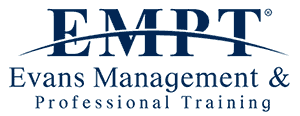 The social model of disability has been developed by disabled people in contrast to the medical model. The medical model is seen to give little acknowledgement or explanation about the individual personal experience of disability or contribute to promoting a more inclusive ways of living with a disability.
The social model of disability has been developed by disabled people in contrast to the medical model. The medical model is seen to give little acknowledgement or explanation about the individual personal experience of disability or contribute to promoting a more inclusive ways of living with a disability.
‘Under the medical model, these impairments or differences should be ‘fixed’ or changed by medical and other treatments, even when the impairment or difference does not cause pain or illness’ www.scope.org (2015).
In contrast the social model of disability asserts that disability is caused by the society in which we live and is not the ‘fault’ of an individual disabled person, or an inevitable consequence of their limitations. The social model tends to promote disability as the product of the physical, organisational and attitudinal barriers present within society, which lead to discrimination.
The social model tends to have the aim of removing barriers so that disabled people have the inclusive opportunity to determine their life styles and general outcomes.
In terms of promoting foster carers understanding about the social model of disability – the following Legal entitlements to equality of treatment for children and young people with complex disabilities or conditions may be useful. Legal entitlements of disabled children and young people for equality of treatment and principles of working inclusively:
- Children Act 1989; Children Act 2004;
- Disability Discrimination Act 1995;
- Disability Discrimination Act 2005;
- Special Educational Needs and Disability Act (SENDA) 2001;
- Equality Act 2010; Disability Equality Duty Disability Equality Schemes;
- Aiming High for Disabled Children2009;
- Codes of practice of sector e.g. Special Educational Needs Code of Practice 2001;
- Disability Rights Commission (DCR) Code of Practice 2002;
- Early Years Action/Early Years Action Plus;
- School Action/School Action Plus; Statement of Special Educational Needs;
- Policies and procedure of work place setting
In terms of promoting the training and development standards for foster carers unit one, subsections: 1.1 a, b, 1.2 a, b, c, 1.3 b. c, 1.4 a, b, c – its useful to work in line with the Ofsted inspection Framework for independent fostering agencies 2014.
The Ofsted framework for independent fostering agencies states that independent fostering agencies must meet their responsibilities as set out in the equality legislation. For all children and young people, the expectation is that the services provided are sensitive and responsive to age, disability, ethnicity, faith or belief, gender, gender identity, language, race and sexual orientation, (2014:8) .
